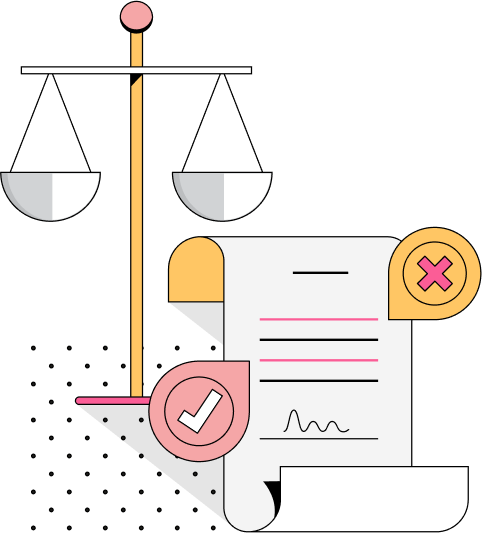The Beginner Guide to the Law of Worker Classification in Canada

An employee is someone who works for someone else’s business. In legal terms, an employee is defined as a party to a “master and servant” contract or a “contract of service.”
A contractor is self-employed and operates their own business. In legal terms, a contractor is defined to be “in business on their own accord” or party to a “contract for service.” In Canada, contractors can be further divided into two subcategories: independent contractors and dependent contractors. A dependent contractor is a middle category between an employee and an independent contractor. They are typically workers who rely on a single client for work but are not an employee due to having the characteristics of an independent contractor.

Overview of the worker classification
Workers are classified based on the degree of control over their work and the degree of economic reliance on the employer for income.
To summarize the various tests, the Supreme Court of Canada has provided a set of factors to determine the status of a worker1:
- How much control the employer/principal has over what the worker does
- Whether the worker uses their own tools
- Whether the worker can hire subcontractors
- How much risk the worker takes with their investment (for example, if they pay for all the materials needed for the job)
- How much the worker oversees investment and management
- The worker's opportunity to earn more depending on how they work
- How essential the worker is to the company (for example, they have the same responsibilities as regular employees)
- The intentions of the parties to establish an employer-employee relationship demonstrated in the employment contract or communication between the parties (usually carries very little weight)
Note, the definition of an “employee” can be more or less broad depending on the specific issue at stake2. For example, a worker may be found to be an employee under complaints of human rights allegations but remain as an independent contractor under a wrongful termination dispute.
Employee classification criteria
Employees tend to have very little control over their work. A worker can be classified as an employee if some of the following characteristics are present:
- Worker works exclusively for one employer
- Worker performs services defined by the employment contract
- Worker is paid a salary or hourly wage
- Worker reports to the employer's workspace on a regular basis
- Worker has clearly defined working hours
- Worker is entitled to a paid vacation leave
- Employer provides the tools and equipment
- Employer has full control over the worker
- Employer pays all statutory benefits and contributions (pension, healthcare, etc.)
- Employer covers expenses that occur during work
Independent contractor criteria
Independent contractors tend to have significant control over their work, including how, when, and where the work is done.
A worker can be classified as an independent contractor some of the following characteristics are present:
- Worker may have multiple clients
- Worker provides all or most of the tools and equipment
- Worker decides how the task is completed
- Worker sets their own working hours
- Worker may hire someone to complete the work
- Worker is not entitled to employee benefit plans
- Worker is not entitled to vacation pay
- Worker covers the expenses
- Worker is paid for the completed work on predetermined basis
- Worker submits invoices to the client
- Worker may accept or reject work
Dependent contractor criteria
Dependent contractors have control over their work but primarily rely on a single client for income.
In Canada, there is a third intermediate category called dependent contractors. Dependent contractors are workers who have their own business but primarily rely on a single client for income3.
A worker may be classified as a dependent contractor if some of the following characteristics are present:
- The worker is found to be an independent contractor
- The worker makes more than 50% of their earnings from a single client
- There is a contractual term stopping the worker from working outside of the relationship. Alternatively, the nature of the work relationship prevents the worker from finding other clients in practice (for example, if the worker is not able to find another client who requires their specialized skills)
Important things to keep in mind as a contractor
Contractors can provide services as a sole proprietor or an incorporated entity
In Canada, a contractor can provide services as a sole proprietor or under a corporation. There are no requirements to incorporate as an independent contractor to provide services. However, there are certain tax advantages to incorporated contractors that are not available to sole proprietors.
There are also no requirements for a worker to have a certain number of clients to be considered as an independent contractor. However, the client may be required to provide common law notice of termination if the contractor depends on a single client for more than 50% of their earnings.
Workers can work as an Employee and an Independent Contractor at the same time.
A worker can be classified as both an Employee and an Independent Contractor for the same company.
Contractors with only one client are at higher risk for misclassification
An independent contractor with only one client may risk being classified as an employee or dependent contractor.
Where an independent contractor is reclassified as an employee, the employer will be liable for unremitted taxes, Canadian Pension Plan (CPP) contributions and Employment Insurance (EI) contributions; unpaid employment-related entitlements such as holiday pay, vacation pay, overtime pay, termination pay, and other minimum standard entitlements; and reasonable notice of termination.
Where an independent contractor is reclassified into a dependent contractor, the client may be liable for common law notice of termination or termination pay. The contractor will be responsible for remittances for CPP, EI, and income taxes, and they are typically exempt from minimum employment standard statutes.
Employers and principals should proactively address the potential risk of independent contractors being found to be dependent contractors. The longer this risk is ignored, the higher the potential damages could be if a termination dispute occurs during employment.

Contractors are not required to have a certain amount of earnings per year to retain status
In Canada, the law focuses on how earnings are generated to evaluate a worker’s status. However, there is no requirement for a worker to earn a certain amount per year to be an independent contractor.
Independent contractors are self-employed, meaning they are responsible for ensuring they are profitable. They are paid by commission or by the task, which indicates a contractor relationship as they can earn more profits through their performance, such as by completing the task more efficiently, but there is also a possibility to earn nothing or even incur losses if the job is done poorly.
In contrast, employees are paid a fixed salary or wages, and this does not change if their work causes the employer to suffer losses. While some employees are also eligible for bonuses and commissions, these are considered irrelevant because they can only be increased by working more hours. Generally, employees do not have an opportunity to increase their earnings unless they work more hours or qualify for overtime.
Contractors have unemployment benefits under the Government of Canada
Canada’s EI benefits have special benefit programs designed for self-employed people (i.e. independent contractors). There are six types of special benefits available to self-employed workers: Maternity, Parental, Sickness, Family Caregiver Benefit for Children, Family Caregiver Benefit for Adults, and Compassionate Care5. To be eligible, a worker must run their own business or control more than 40% of their corporate voting shares. The benefits provide up to 55% of earnings up to a maximum amount depending on the type of benefit.
Certain professions may be excluded from minimum employment standard protections
Even if a worker is found to be an employee, there are some cases where they may not be given rights found in minimum employment standard legislation. These rules vary depending on the particular profession, industry, and province where the worker is located.
For example, Bill 88, recently introduced in Ontario in January 2023, excludes business consultants and information technology consultants from the Ontario Employment Standards Act if certain conditions are met, namely that:
- The business or information technology consultant provides services through a corporation of which the consultant is either a director or a shareholder who is a party to a unanimous shareholder agreement; or a sole proprietor if the services are provided under a business name that is registered under the Business Names Act.
- There is an agreement for the consultant’s services that pay at least $60 per hour CAD, excluding bonuses, commissions, expenses, and travelling allowances and benefits, and must be expressed as an hourly rate.
- The consultant is paid the amount set out in the agreement as required above.
- Such other requirements as may be prescribed are met.
1 671122 Ontario Ltd. V. Sagaz Industries Canada Inc., 2001 CarswellOnt 3357 (S.C.C.) at para 47; To learns more about the law on worker classification, consider viewing these cases: Regina v Walker [1858] 27 L.J.M.C. 207, Montreal v. Montreal Locomotive Works Ltd. et al [1947] 1 D.L.R. 161, Stevenson Jordan and Harrison, Ltd. v. MacDonald and Evans [1952] 1 T.L.R. 101, Wiebe Door Services Ltd. V. Minister of National Revenue, 1986 CarswellNat 366 (Fed. C.A.), and McCormick v. Fasken Martineau Dumoulin LLP [2014] SCC 39
2 McCormick v. Fasken Martineau Dumoulin LLP [2014] SCC 39
3 McKee v. Reid's Heritage Homes Ltd., 2009 CarswellOnt 8053 (Ont. C.A.) at paras. 30 to 36
4 William Scott v. Her Majesty The Queen, 1994 CarswellNat 867; and Criterion Capital Corp. v. R., 2001 CarswellNat 2253.
5 https://www.canada.ca/en/services/benefits/ei/ei-self-employed-workers.html


